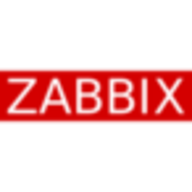

Zabbix and PRTG Network Monitor compete in the network monitoring category, each offering unique advantages. Zabbix excels in providing a cost-effective open-source solution with a broad feature set, while PRTG Network Monitor is favored for its user-friendly interface and quick deployment capabilities.
Features: Zabbix provides automated network discovery, historical data storage, and flexible customizations to accommodate diverse environments. It supports comprehensive notifications and integrations. PRTG Network Monitor stands out with its rapid deployment, an extensive range of sensors, and cloud integration without the need for complex customizations.
Room for Improvement: Zabbix could enhance its dashboard customization, report generation, and user-friendliness for non-technical individuals. Improved integration capabilities and network mapping are also areas for growth. PRTG Network Monitor could improve its licensing cost structure, offer better sensor customization, and enhance data visualization options through its desktop app.
Ease of Deployment and Customer Service: Both Zabbix and PRTG Network Monitor are well-regarded for their on-premises deployment capabilities. Zabbix is frequently used in hybrid cloud environments and relies on community forums for support with the option of professional support. PRTG provides traditional customer service, although user opinions on response times vary.
Pricing and ROI: Zabbix offers a cost-effective, open-source solution with no licensing fees, leading to a high ROI. Support services are available for purchase. PRTG Network Monitor, while user-friendly, involves licensing fees that might accumulate over time. Both tools help enhance system visualization and reduce network issues, but varying initial costs and scalability factors might influence the suitability for enterprises or smaller organizations with budget constraints.
It provides accurate data for utilization, allowing us to monitor and optimize our investments in WAN connection capacity.
After introducing PRTG Network Monitor, we have saved time, and it's easy for everybody to monitor everything.
I have seen a return on investment with PRTG Network Monitor as it has saved a lot of time, and its monitoring has reduced manpower requirements, which has been helpful.
The setup process is well-documented, making it easy to deploy.
Tutorials are available so I can manage any issue with PRTG Network Monitor easily.
We are getting solutions on time, and they are very helpful.
It is so straightforward that I have never had to use the support.
On a scale of one to ten, scalability is rated as 9.5.
PRTG Network Monitor has the ability to scale and add new devices.
You can install them in each network, even if they are not connected, and it works.
Zabbix is very scalable and lightweight.
Zabbix has high scalability.
I would rate its scalability ten out of ten.
We haven't needed vendor support for the last three years, which demonstrates the product's stability.
Zabbix is very scalable and lightweight.
Zabbix is quite stable, and we haven't had any problems with Zabbix itself.
They need to improve application performance monitoring, error tracing mechanisms, and log management.
PRTG Network Monitor should provide syslog monitoring since it is not available at this time.
PRTG Network Monitor can sometimes be too detailed and cluttered at the beginning, making it heavy to use.
The only issue I can note is that it's Linux-based, and Linux documentation is not the best.
Pricing is by the number of devices, not by sensor.
The prices are very high for PRTG Network Monitor.
It's not too high, nor too low, but it's reasonable.
It is literally free.
PRTG Network Monitor already provided me with 100 free sensors, which is enough for my network monitoring.
PRTG Network Monitor has a good dashboard that shows each and every piece of information, so we can easily find out what is happening with the systems.
These reports help me in my day-to-day work, and I rely on them because they provide proof during escalation, with exact downtime logs and related information.
If disk usage surpasses a threshold, say 70%, I receive alerts and can take proactive action.
Zabbix has a lot of features, including monitoring, status updates, and collecting information telemetry from storages and servers as well.
Zabbix is Linux-based open-source software, and the main use case is to reduce costs.
| Product | Market Share (%) |
|---|---|
| Zabbix | 11.4% |
| PRTG Network Monitor | 4.1% |
| Other | 84.5% |


| Company Size | Count |
|---|---|
| Small Business | 56 |
| Midsize Enterprise | 18 |
| Large Enterprise | 40 |
| Company Size | Count |
|---|---|
| Small Business | 53 |
| Midsize Enterprise | 23 |
| Large Enterprise | 34 |
PRTG Network Monitor runs on a Windows machine within your network, collecting various statistics from the machines, software, and devices which you designate. PRTG comes with an easy-to-use web interface with point-and-click configuration. You can easily share data from it with non-technical colleagues and customers, including via live graphs and custom reports. This will let you plan for network expansion, see what applications are using most of your connection, and make sure that no one is hogging the entire network just to torrent videos.
To monitor a large IT environment, it's important to be able to scale PRTG up. Paessler PRTG Enterprise Monitor includes all the proven capabilities of PRTG Network Monitor, which are enhanced by exclusive ITOps Board for a service-oriented, central overview of multiple PRTG servers.
Zabbix is an open-source monitoring software that provides real-time monitoring and alerting for servers, networks, applications, and services.
It offers a wide range of features including data collection, visualization, and reporting.
With its user-friendly interface and customizable dashboards, Zabbix helps organizations ensure the availability and performance of their IT infrastructure.
We monitor all Network Monitoring Software reviews to prevent fraudulent reviews and keep review quality high. We do not post reviews by company employees or direct competitors. We validate each review for authenticity via cross-reference with LinkedIn, and personal follow-up with the reviewer when necessary.